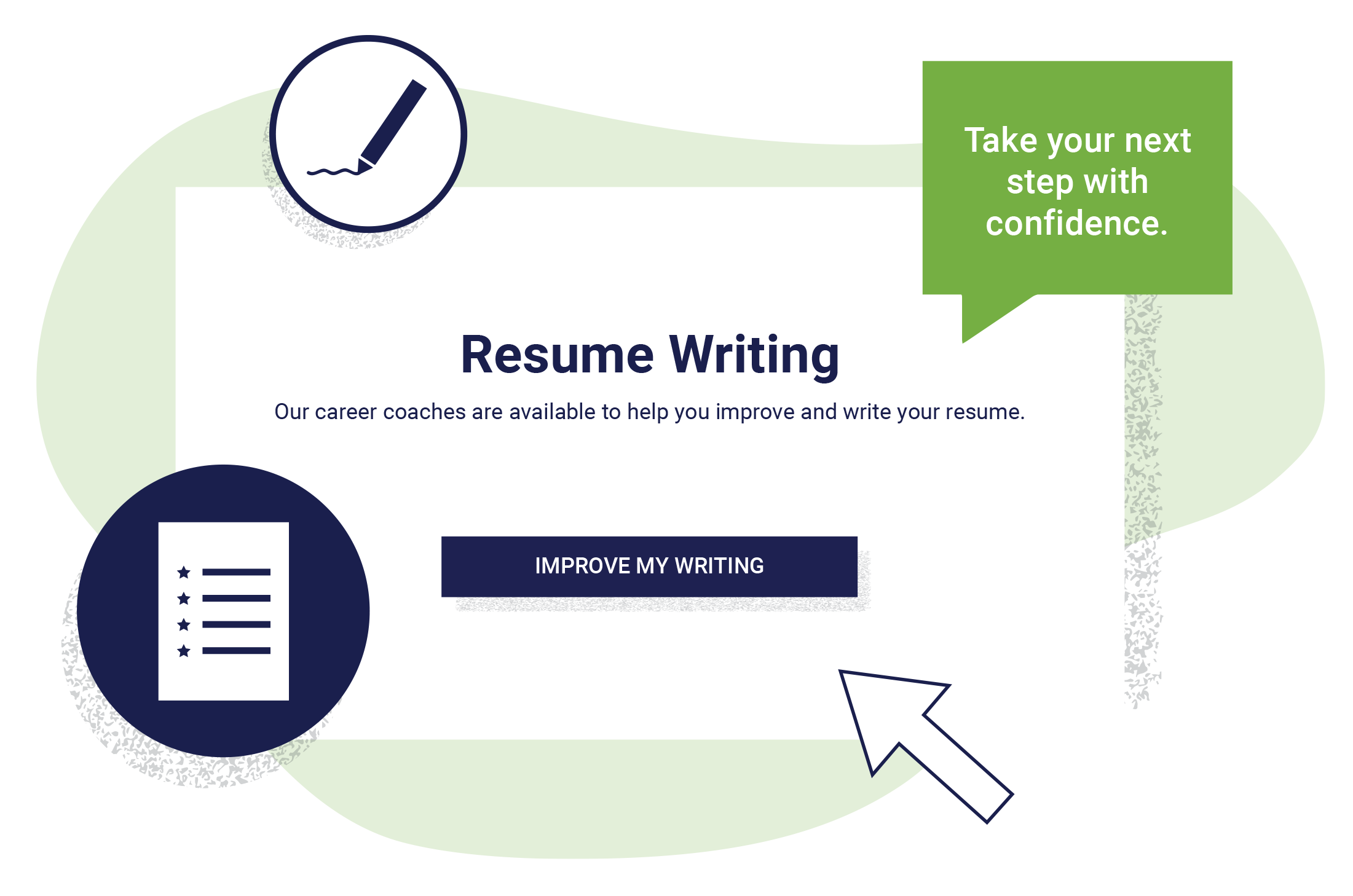Outplacement Services
INTOO’s outplacement and career transition services connect laid-off employees with career coaches faster with unlimited hours of coaching 7 days a week to accelerate the path to new employment.
This means access to experienced resume writers, interview coaching, networking advice and more, every day—including Saturday and Sunday.


Career Transition Services with a Human Touch
As career transition specialists, our focus on high-quality coaching and technology innovation enables you to protect your brand and bottom line while providing the career-changing outplacement services your employees deserve.
- INTOO’s career coaching is unlimited and available 7 days a week until landing
- INTOO outplacement offers immediate and on-demand access to personalized guidance from expert career coaches
- INTOO’s empathetic coaches address the whole human for a more successful career transition
Explore the INTOO outplacement coaching difference
INTOO offers unlimited hours of 1:1 career coaching seven days a week, plus live coach-led webinars, to offer job seekers personalized strategies for success in transitioning to a meaningful next step.
Our leading career transition services feature:
- A variety of assessments: To help job seekers identify their strengths and preferences, and use the learnings in personal branding, networking, and job applications
- Interactive AI-assisted video mock interview tool: So job seekers can be ready to put their best foot forward for the specific role they’re interviewing for
- Resume and LinkedIn profile reviews: To make the best first impression and get noticed by the right people
- Cover letter builders: Integrated with AI to emphasize how the job seeker’s skills and talents are right for the desired role
- Dynamic, live coach-led webinars: On subjects like resume writing, interviewing, personal branding, and more

Features and Service that Create an Exceptional Experience
for job seekers and clients alike
Discover the unique benefits of INTOO Outplacement
Employees participating in INTOO Outplacement have unlimited access to experienced career coaches on demand seven days a week. We’re here to help prepare for that Monday morning interview or talk through a job offer, even over the weekend.
Immediate access to personalized support is crucial for employees impacted by layoffs. With INTOO, participants can engage with career coaches from day one to jump-start their job search and are encouraged to meet with our coaches as often as they like, and for as long as they need.
Our participants tell us time and again that the availability of INTOO’s expert and caring coaches made their career transition less stressful and more productive.
Flexible solutions
for your employees, employer brand, and bottom line
- Multiple levels of career transition support—each with a minimum of 6 months of service—enables you to give employees the motivation and support they need without sacrificing quality or employer brand protection.
- While the complexity of other providers’ programs make choosing the right options difficult, our outplacement services make it easy with coaching that adapts to individuals’ needs as they engage.
- We know that no two job seekers are the same. That’s why we ensure they receive individually tailored advice and guidance to help them achieve their personal career transition objectives.
Award-winning platform and expert support
- Your dedicated Client Success Team is available to support your organization before, during, and after workforce change events.
- We provide job seekers with access to millions of job listings, a variety of assessments, on-demand access to upskilling and reskilling courses, video interview preparation technology, and other innovative tools that maximize each employee’s unique career transition opportunities and accelerate landing time.
- INTOO’s reporting dashboard puts outplacement program results at your fingertips to provide a clear line of sight into results.
Better results
with candidates landing 2.5X faster
- Strategic and consultative career coaching offers the quickest path to meaningful career change—that’s why our outplacement participants receive unlimited, individualized, one-on-one coaching 7 days a week.
- Our career coaches receive a 97% satisfaction rating from job seekers on resume, cover letter and LinkedIn profile writing, in addition to career transition coaching on interview strategies, salary negotiations and more.
- INTOO’s established global coach program supports your transitioning workforce with outplacement services in 102 countries.
Comprehensive outplacement service
available to more employees
- Unlike traditional outplacement service providers, INTOO saves on high overhead costs and invests in innovation and unlimited coaching to deliver an affordable solution that can be given to more—if not all—employees.
- Our award-winning outplacement program provides personalized support to individuals impacted by layoffs, ranging from senior executives to non-exempt hourly employees. With INTOO as your career transition specialist, no one is left behind.
- This comprehensive approach serves to better protect your company’s reputation and provide support to employees who have historically often been overlooked in times of transition.
Onboarding on your schedule
for fast access to career transition services
- We make accessing outplacement services quick and easy so that you and your employees can experience INTOO outplacement coaching benefits as soon as possible.
- Each client’s timeline is structured according to their specific needs. Typical onboarding takes just two days, and we can complete implementation in just a few hours if there is an urgent need.
- Job seekers have immediate access to our service and our coaches once you have communicated the benefit to them.
Read what our customers are saying on G2
Outplacement FAQs
What is outplacement?
Outplacement is an employee benefit provided by a company to workers who have recently been laid off. The service involves employers helping their exiting employees to find new work and transition smoothly back into the workforce.
Generally, a company will enlist the help of an outplacement firm to deliver such niche services, including but not limited to career coaching, resume help, and job search support, to affected employees.
Although outplacement has always been used as a strategy to support employees, the way this service is provided has shifted significantly in recent years to meet companies’ changing needs.
When outplacement first emerged in the 1960s, companies typically offered career assistance primarily to executives and upper-level employees, providing them with a satellite office, phone and assistant to aid in looking for employment. Today, companies seek to offer outplacement not just to a select few, but to all affected employees across every level of an organization. The aim is to better protect brand reputation and support the employees who have historically been underserved in times of transition.
In addition, in today’s digital age, employees have come to expect convenience from any service they engage with, and outplacement is no different. Modern outplacement services can offer coaching and resources that are easily accessible and on-demand through the click of a button.
Outplacement services can be used by companies who are looking to downsize, thinking about restructuring or making layoffs for monetary reasons.
Summary:
- Outplacement is for employees who have been laid off
- The service can help them to find another job
- It can protect your brand reputation during difficult times, such as during layoffs
- It is for all employees at all levels of a business
How does outplacement work?
Outplacement services are a key part of building a supportive severance package. In addition to monetary and benefit components, these career transition services help guide your impacted employees forward to their next opportunity with personalized career coaching and complementary technology offering a wealth of job-seeker resources. Outplacement is provided by you as the employer and isn’t something your employees should look for independently.
INTOO offers a variety of programs to support employees based on their job level and needs. All of our coaching programs provide unlimited career coaching and innovative technology to help job seekers create a unique career transition plan, build their resume and cover letters, practice interviewing, negotiate their salary, and more. All INTOO participants benefit from 1:1 on-demand coaching at the touch of a button. Higher tier programs match dedicated career coaches to each individual for more strategic, personalized job search plan development and guidance.
Getting started with INTOO is fast and easy for you and your employees. We ensure an expedient roll-out of services—within just a few days if the need is imminent. Your client success manager will be your partner in effectively and compassionately onboarding your impacted employees to our programs, and our HR portal puts real-time program metrics and insights at your fingertips.
What can job seekers expect from outplacement services?
Expert career coaching is the cornerstone of an impactful outplacement program. It is usually combined with resume writing and a technology platform with a wide selection of job seeker tools and resources to jumpstart individuals’ job search.
Why is outplacement important for employers?
Strengthen brand reputation
Layoffs are a vulnerable time for a brand. Exiting employees, if they feel they’ve been treated poorly, can publicly share their opinions about your company on Glassdoor and social media. In fact, INTOO’s Employer Branding Study found 66% of people choose to share their poor layoff experiences with others. Companies that don’t extend their brand values to exiting employees may see significant impact as they look to attract talent down the line. According to Glassdoor, 50% of potential candidates won’t apply to a company with a bad reputation1. Offering outplacement to departing employees and supporting them at a challenging time in their careers can help prevent online backlash. If laid-off workers feel that your company did its best to help them, you will be better able to mitigate long-term damage to your company’s reputation.Reduce impact to your bottom line
Brand reputation has a powerful effect on your bottom line. For one, a positive brand reputation attracts and retains customers, while a negative one repels them. Our Employer Branding Study found 64% of consumers have stopped purchasing from a brand after hearing news of that company’s poor employee treatment. Protecting your brand reputation with outplacement puts you in a better position to maintain and expand your customer base. Brand reputation also helps you save money when recruiting employees. Harvard Business Review reports that when a company has a poor reputation, new hires come at an additional cost of $4,723 each. Moreover, since outplacement allows you to retain better relationships with exiting employees, your company will be in a better position to attract “boomerang” employees—those who return to work for your company at a later date.Mitigate risk of litigation
Involuntary terminations carry the risk of litigation, which can bring both monetary and reputational repercussions. In recent years, retaliation claims have made up 53% of all charges filed by workers with EEOC2. Considering that 60-70% of all workplace lawsuits taken to litigation are lost by employers3, reducing this risk is imperative. Offering outplacement helps impacted employees move on from the event and look toward new opportunities. It is a gesture that sends the message that you care about your former employees’ well-being.Demonstrate a positive company culture
During and after a reduction in force, it is critical for businesses to foster a positive company culture to encourage the productivity and loyalty of remaining employees. When remaining employees witness the involuntary departure of colleagues whom they consider friends, demonstrating care for those exiting is crucial. One study found that layoffs impacting just 1% of the workforce will trigger a 31% increase in voluntary turnover, on average4. Additionally, it can cost 3x or even 4x a departing employee’s salary to hire a replacement5. When you consider the risks of not doing right by your employees, offering outplacement to laid-off employees is a highly cost-effective strategy to further your culture and retain remaining talent. When departing employees feel supported by your company—and can land new jobs through an effective outplacement program—the remaining employees will feel confident that your organization is truly interested in the long-term well-being of its people. 1Glassdoor 2McKinsey 3https://www.nonprofitrisk.org 4Harvard Business Review 5SHRMWhy is outplacement important for employees?
They can find a new job faster.
Immediate access to outplacement coaching can help job seekers land a new role 2.5x faster than the national average.
INTOO’s coaches are available on-demand and participants can engage and strategize with coaches as often as they want—more effectively helping them attain new career opportunities that fit their interests and skills.
They’ll receive one-on-one career counseling.
INTOO’s career coaches can advise job seekers on everything from conducting an effective job search to helping them prepare for interviews and negotiate a competitive salary. Our unparalleled access to experienced career coaches seven days a week with no cap on coaching hours delivers personalized career guidance when individuals most need it.
They’ll benefit from resume services.
INTOO’s experienced resume coaches help employees stand out from the competition. Our experts offer personalized resume and cover letter consulting based on each individual’s career goals. Participants will also learn best practices to ensure their applications will pass through applicant tracking system filters.
They learn key job-seeker skills.
INTOO’s outplacement service teaches your employees new skills that they can take forward when applying for any new job, including resume writing, interview preparation, networking, and more.
They’ll learn more about themselves and what they want from their next job.
INTOO’s robust outplacement program provides job seekers with a suite of resources, including assessments and personality tests, resume builder and AI-integrated cover letter tool, curated job boards and notifications, access to in-depth company research databases, social media networking guides, and more, to help them find meaningful employment faster.
They’ll have access to a comprehensive job search engine.
INTOO’s job search tool provides matches to job seekers’ skills and interests, includes industry-specific job boards and provides detailed information on companies looking for new talent. Our LinkedIn integration surfaces personal connections shared by the prospective employer and the job seeker as they browse jobs. Employees can also set up job alerts so they are instantly alerted to new postings and can be among the first to apply.
They’ll benefit from the latest AI job-seeker technology.
INTOO’s career-focused technology is at the forefront of AI innovation. From creating targeted cover letters to practicing answers to pointed interview questions, our tools incorporate the latest AI technology to give job seekers an added boost as they work with their coach.
How do you compare outplacement vendors?
When comparing outplacement providers, be sure to ask vendors how much time your employees will have with their coach—both in a single session and over the course of their program—as this impacts an individual’s success and overall experience with an outplacement provider.
You’ll also want to know how quickly and when your employees will be able to access a coach, so that they don’t have to wait long for guidance. Immediate access to outplacement support also helps employees look forward to a meaningful career move, which can help preserve your employer brand during a challenging period.
Participants of INTOO Outplacement programs can immediately access coaches at the click of a button seven days a week, so that they can have crucial job search assistance within seconds, even on weekends. Our coaching is offered for an unlimited number of hours and sessions throughout the duration of the program.
When you choose INTOO as your partner, you benefit from our decades of experience helping users globally find new jobs quickly.
Explore how INTOO’s whole-human coaching adds value to outplacement.
Related Outplacement Articles
Interested in finding out more about outplacement and its benefits? Click the links below for additional information on outplacement and career transition services.

What Is Outplacement Coaching?
While business coaches and career coaches are common, outplacement coaching serves a professional...



4 Reasons You Should Use the Outplacement Support Your Company Offers
Being laid off ranks as one of the top five most stressful situations in a person's life. When...



How Does Outplacement Assistance Work? 7 Things to Know
Most HR professionals know outplacement assistance is often offered to employees who are laid off...



5 Ways Outplacement Counseling Helps with the Job Hunt
An employee exit is a difficult situation to navigate, whether you're the employer or employee....
What Is Outplacement Coaching?
While business coaches and career coaches are common, outplacement coaching serves a professional in a specific...
4 Reasons You Should Use the Outplacement Support Your Company Offers
Being laid off ranks as one of the top five most stressful situations in a person's life. When you’re laid off, you...
How Does Outplacement Assistance Work? 7 Things to Know
Most HR professionals know outplacement assistance is often offered to employees who are laid off or terminated as a...
5 Ways Outplacement Counseling Helps with the Job Hunt
An employee exit is a difficult situation to navigate, whether you're the employer or employee. Employers have to find...
